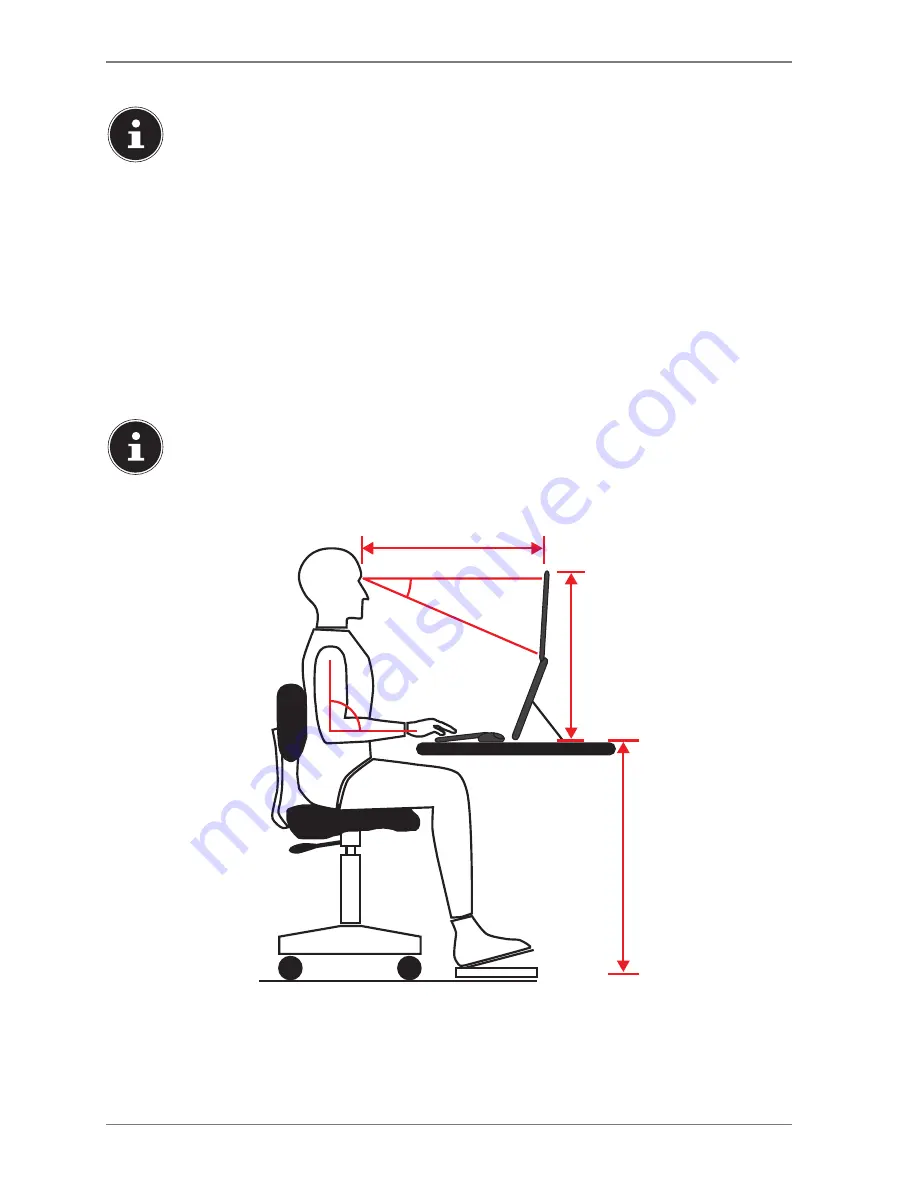
10
7.3. Setting up and positioning the monitor
PLEASE NOTE!
Avoid dazzle, reflections and strong bright-dark contrast in order to protect your
eyes.
The monitor should never be placed next to a window because this is the brightest part of the room
in daylight. This brightness can make it more difficult for the eyes to adjust to the darker monitor.
The monitor should always be positioned so that the direction of vision is parallel to the window fron-
tage.
The parallel line of vision should also be maintained in relation to artificial lighting equipment. In
other words, the same criteria and principles apply where the workspace is illuminated with artificial
light.
If it is not possible to position the screen as described, the following can be helpful:
• Rotate, lower or tilt the monitor;
• Slatted or vertical blinds on the windows;
• Partitions or changes to artificial lighting.
PLEASE NOTE!
Take regular breaks when working at your monitor to prevent tenseness and fa-
tigue.
Sitting for a long time without changing position can be uncomfortable. Correct posture is very im-
portant for minimising the risks of physical problems or damage.
90°
40 - 45°
50 - 60 cm
46 - 55 cm
66 - 71 cm
•
In general
– change your position frequently (around every 20-30 minutes) and take regular
breaks to avoid tiredness.
•
Back
– when sitting at your workstation, your back must be supported by your chair’s backrest,
which must be upright or angled slightly back.
•
Arms
– your arms and elbows should be relaxed and loose.
Your elbows should be close to your
body. Hold your forearms and hands roughly parallel to the floor.






































